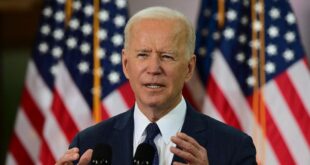
A patient is transported outside of Tisch Hospital in New York City earlier in November.
AFP/Getty Images
As New York braces for an influx of COVID-19 cases after Thanksgiving, efforts to curb the spread have shifted from closing nonessential businesses to ramping up hospital capacity and trying to stem small private gatherings.
“In the new battlefield, hospital capacity is top concern,” Gov. Andrew Cuomo announced in his news briefing Monday. “It’s about hospital beds, it’s about ICU, and it’s about having enough staff and enough equipment.”
The renewed emphasis on hospitals is one of five new strategies outlined by the governor to help curb infections. They also include increased and balanced testing, keeping schools open for kindergarten through eighth grade when safe, alerting the public to the danger of small gatherings and preparing for distributing the vaccine when it becomes available. Mayor Bill de Blasio announced the school reopening plan for the city on Sunday.
Restaurants and other businesses are no longer the biggest problem when it comes to spreading the virus, the governor said. About 65% of current cases were contracted at small events of 10 people or less, and officials are expecting a large increase in cases across New York after the Thanksgiving holiday.
That doesn’t mean that more lockdowns aren’t coming, however.
“Family gatherings and smaller social gatherings have exploded as places where the virus is spreading,” Cuomo explained. “And this is the bottom line: COVID rates go up…and the hospitalization rate goes up.”
The statewide positivity rate was 4.57% on Sunday, Cuomo said, with 3,532 hospitalizations, the highest since May, and 681 in the ICU.
Hospitalization, fatality and case rates, as well as available beds, PPE and staff, will now be a factor in determining if a neighborhood becomes a yellow, orange or red zone, according to Cuomo. Those designations, previously based on positivity rates, decide the level of operations allowed in the area.
Metrics for each one of those factors will be set later this week, the governor noted.
“I want to wait and see what the numbers are post-Thanksgiving,” he said, adding that they expect to see the effect of the holiday on cases within a week to 10 days.
In addition, the state will add an emergency provision that will allow the government to issue a “New York Pause,” essentially a lockdown, or issue a zone change in a crisis.
The state Department of Health has also initiated emergency hospital measures, such as identifying retired medical staff, limiting elective surgeries, distributing patients throughout and among hospital systems and preparing emergency field hospitals to double capacity for patients.
Read: Birx says Americans who gathered for Thanksgiving should ‘assume that you’re infected’
These initiatives aim to avoid the “brutal” conditions seen at hospitals earlier this year, according to Kenneth E. Raske, the CEO of the Greater New York Hospital Association, which represents more than 160 hospitals and health systems statewide.
“We’ve come to terms with a lot of issues we were confronting in the spring,” he said during the news conference, including sourcing PPE, expanding capacity and balancing patient load.
“Our ability to cope with this is going to be a total team effort, as it has been, and our ability to respond to the health care needs of the public…will be assured by [this] plan.”
Amid the increasing positivity rates, Cuomo noted schools are seeing fewer cases than the greater community.
Because of that, another part of the governor’s strategy going forward is to keep special education and K-8 schools open while maintaining regular testing of students, teachers and staff.
After closing in mid-November after hitting the 3% positivity threshold, elementary schools in New York City are set to open next Monday, de Blasio announced over the weekend. Parents have faced delays and last-minute changes, but the state’s recommendation is now to keep schools open, even if there are other restrictions in the area.
The governor’s other new initiatives include increased testing across all groups of people, from students to essential workers to the general public; a public education campaign regarding private gatherings, and eventual vaccine distribution.
Coronavirus update: Global cases of COVID-19 near 63 million, U.S. hospitalizations hit another record
Cuomo expects to see a surge in cases through the new year, but said the end is in sight.
“After New Year’s, it starts to settle down, you see the rate stabilize, but the rate will be much higher than it is today,” he said. “You won’t see a real end until the vaccine hits critical mass and I would wager today you won’t see that until late spring, early summer at the current rate.”
